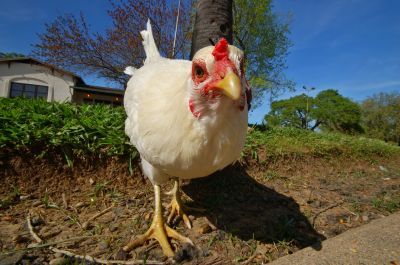Bacteria found in many US store-bought chickens

Many chickens sold in food stores in the United States might be contaminated with potentially harmful bacteria and consumers should be vigilant and cook their chicken properly to avoid poisoning, according to an investigation by consumer watchdog group Consumer Reports.
In a study of nearly 400 chickens from over 100 supermarkets around the US, including mass retailers, gourmet specialty stores and natural food stores, the analysis found that about two-thirds of the chickens harbored dangerous bacteria including salmonella and campylobacter, a common bacteria responsible for food-borne illness.
The investigation, which will be published in the January issue of Consumer Reports Magazine found that 62 percent of chickens contained campylobacter, 14 percent contained salmonella, and 9 percent contained both. Only 34 percent of the chickens surveyed were pathogen-free.
The cleanest chickens were found to be air-chilled broilers and about 40 percent of those had one or both pathogens. Store-brand organic chickens carried no salmonella, but 57 percent of them carried campylobacter, the report said. The popular brand Perdue had the cleanest chickens, with tests showing 56 percent of them as free of both pathogens. The most contaminated chickens were from the brands Tyson and Foster Farms, with 80 percent testing positive for either campylobacter or salmonella, or both.
In the meantime, there are ways to avoid getting infected with salmonella and other food-borne bacteria. Things to keep in mind when purchasing chicken:
-When shopping, make sure you take the chicken from the bottom or back of the freezer; keep all meats separate to avoid cross-contamination from juices.
-Chicken should be placed immediately in the freezer or fridge to prevent the growth of bacteria; never refreeze thawed chicken.
-When handling chicken, don't rinse it in the sink, dip in a bowl of water and discard water; use a meat-only cutting board and always thoroughly wash anything (knives, other utensils, hands) that has touched raw chicken.
-When cooking chicken, make sure it has a temperature of 165 degrees F (74 degrees C) and use a meat thermometer inserted into the thickest part of the chicken.
Subscribe to Independent Premium to bookmark this article
Want to bookmark your favourite articles and stories to read or reference later? Start your Independent Premium subscription today.

Join our commenting forum
Join thought-provoking conversations, follow other Independent readers and see their replies